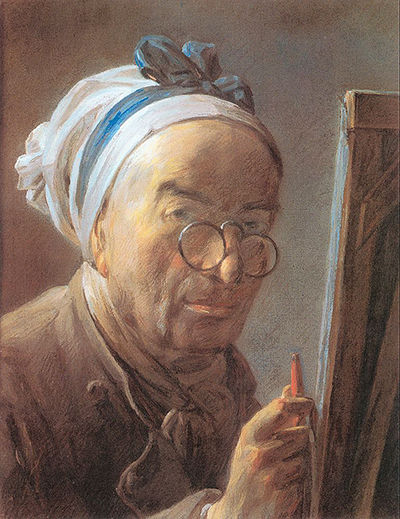Let us learn more about the still life master, Jean-Baptiste-Simeon Chardin, with this extensive list of quotes from his lifetime, plus some opinions on his work from other related individuals.
Famous Quotes by Jean-Baptiste-Simeon Chardin
How many attempts, now happy, now unhappy!... He who has not felt the difficulties of his art does nothing that counts.
I do not finish a painting until it is perfect.
I must forget everything I have seen, and even forget the way such objects have been treated by others.
One makes use of pigments, but one paints with one's feelings.
The eye must be taught to look at nature.
We [painters] use colors, but we paint with feeling.
Who told you that one paints with colors? One makes use of colors, but one paints with emotions.
You can be sure that most of the high positions in the country would be empty if one were admitted only after an examination as severe as the one we painters must pass.
Quotes about Jean-Baptiste-Simeon Chardin by Art Critics and Fellow Artists
Chardin is renowned for the quiet charm of his carefully constructed genre scenes and still lifes.
The National Gallery (UK)
Because of their often visceral detail, especially in illustrating dead fish and flayed animals, Chardin's paintings were revisited by modern artists especially in the age of Surrealism, with some considering Chardin as a Proto-Surrealist painter. Chardin's work demonstrated a love of beauty in previously unacknowledged places, to the extent that his objects would take on a magical quality previously unforeseen in the history of painting... Chardin's genre paintings share a lot of similarities with his still lifes. Unlike his contemporaries who were consumed with the allegorical and figurative aspects typical of Rococo painting, Chardin gave as much attention to the objects in his paintings as he did the people. More typically in portraiture, objects appear only as 'accessories' to the person portrayed. But pictured in moments of quiet reflection, Chardin’s sitters often seem to be the accessories themselves.
TheArtStory.org
Chardin's laborious method of working, but also the success of certain designs, encouraged him to paint more than one and often several versions of many of his genre and still life subjects. The lowly character of his subject matter and his bold, impastoed manner of painting ran counter to the prevalent rococo trend that dominated the Parisian art world in the early part of his career and to the academic classicism that developed during his last two decades. Yet Chardin remained admired and sought after until the end, in spite of a certain disdain expressed by more academically minded critics. Problems with his eyesight in the last few years led him to adopt pastel painting, in which he made brilliant portraits, especially of his wife and himself.
National Gallery of Art




